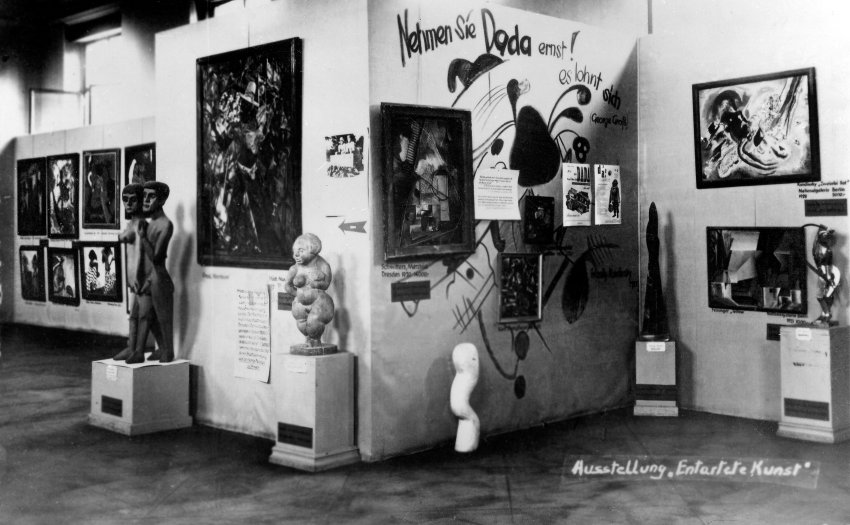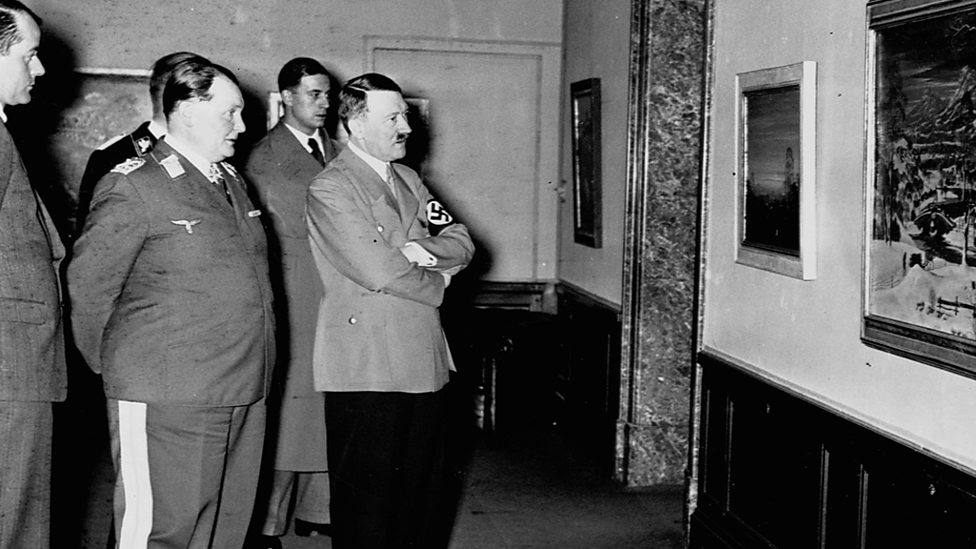Fortune and the Führer (1930-1945)
Summary:
In this week’s lecture, we learned about the Great Depression, the Second World War, and European designers in America. During the Great Depression in America, many jobs were created by the US Works Progress Administration in an attempt to stimulate the economy. These included the Farm Security Administration (an organization that tried to improve the lifestyle of American farmers during the depression) and commissioning artists to create posters for public services/events. In 1933, the Nazi party was elected in Germany and they used extensive propaganda to spread their racist goals and ideals. Artists, such as Helmut Franz Josef Herzfield aka John Heartfield, were named Degenerate artists as Hitler believed that modern art was bad.
Several European designers including Herbert Bayer and Jan Tschichold fled to America when World War 2 broke out. Edward McKnight Kauffer, as well as many other artists, were involved in creating posters for World War 2. Walter Paepcke, the son of a German immigrant, founded the Container Corporation of America (CCA) and hired many European designers to design his posters. Such as A.M. Cassandre, Jean Carlu, and Herbert Bayer. Fortunato Depero was another designer who moved to the US.
I found this time period and its poster designs very invigorating. Even though many posters were propaganda, I have to admit that they were effective and did their job well. The war clearly influenced all aspects of life and I am amazed by its influence on design as well.
Research:
For this time period, I was assigned to the subject of “art/colour” and have decided to research Degenerate art.
The term “Degenerate Art” (translated from the German “Entartete Kunst”) was coined by the Nazi party in Germany to describe art that did not support the ideals of national socialism. All modern art was considered Degenerate Art, especially Expressionism, and through this systemic suppression of contemporary art, sanctions were created to forbid exhibitions and creations of any contemporary art that was not approved by the Nazi party. The term “Degenerate” was also applied to the artists who created contemporary art as well.
The phrase “Degenerate Art” was also used as a title for a propagandistically designed Nazi exhibition of modern art. This defamatory exhibition displayed Degenerate Art in 1937 and was held in Munich. The “Entartete Kunst” exhibition was advertised to display the “culture documents of the decadent work of Bolsheviks and Jews”. It intended to disparage modern art and link the Jewish people with the decline of German art.

https://www.moma.org/d/assets/W1siZiIsIjIwMTcvMDcvMTQvNW5xb2RoZDN6dl9IZXJvX2ltYWdlLmpwZyJdLFsicCIsImNvbnZlcnQiLCItcmVzaXplIDIwMDB4MjAwMFx1MDAzZSJdXQ/Hero-image.jpg?sha=57034da3c86b6988
So how did the Nazis do this?
About 16 000 pieces of modern art were confiscated from German museums on the orders of Joseph Goebbels, the minister of propaganda. Within this 16 000, about 700 works were chosen to be displayed in the “Entartete Kunst” exhibition. Works by Pablo Picasso, Wassily Kandinsky, Ernst Ludwig Kirchner, and Emile Nolde are just some of the few featured. These Degenerate artworks were displayed with photographs of and paintings by psychotic patients and were subjected to vicious ridicule by the press and the German people. This parallel was specifically drawn to show the connection between modernism and mental illnesses. In addition, it was designed to contrast with a simultaneous exhibition of art that was approved by Nazi leaders.

http://www.paraphiliamagazine.com/periodical/wp-content/uploads/2013/03/Collage.jpg
After its first appearance in Munich, the “Entartete Kunst” exhibition also toured to other German cities, continuing to spread its racist goals and ideals.
In 1939, the start of World War 2, many of the confiscated art were auctioned in Switzerland or sold abroad to finance the Nazi Party. The rest, about 5000 pieces, was believed to be burned in Berlin later that year.

http://1.bp.blogspot.com/_nntp72oZn2s/TRjFhoYELQI/AAAAAAAAAlg/ycj58YkGXuA/s1600/Degenerate%2BArt%2BExhibition.jpg
Degenerate Art was an attempt to bring art under Nazi control. The “Entartete Kunst” exhibition intended to “educate” the public about the “art of decay” and wanted to show that modernist tendencies (such as abstraction) were the result of genetic inferiority and society’s moral decline.
_
References:
- Britannica, The Editors of Encyclopaedia. “Degenerate Art.” Encyclopædia Britannica, Encyclopædia Britannica, Inc., 15 Oct. 2013, www.britannica.com/art/degenerate-art.
- Tate. “Degenerate Art – Art Term.” Tate, Tate, www.tate.org.uk/art/art-terms/d/degenerate-art.
- “Degenerate Art.” Lee Bontecou. Untitled. 1959 | MoMA, www.moma.org/calendar/exhibitions/3868.

